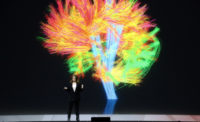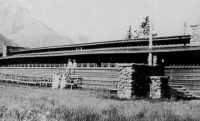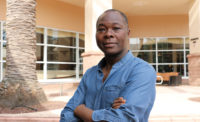There is no question that design can have significant effects on our well-being—whether encouraging us to take stairs or exposing us to uplifting views of nature. Less obvious is how these decisions can influence us on a neurological level. Enter Dr. Eve Edelstein, an in-house researcher and “neuro-architect” based in Perkins + Will’s San Francisco office. Edelstein, who holds degrees in neuroscience, architecture, and anthropology, leads the firm’s Human Experience Lab, one of 10 specialized in-house research groups. There she conducts research and works with universities to introduce scientific evidence into designing everything from workplaces to health-care facilities. Edelstein is also a cofounder of Clinicians for Design, an international consortium of scientists and design professionals. Edelstein spoke with RECORD from London, where she was addressing a conference.
Architectural Record: What kind of research is your lab focusing on at the moment?
I focus each year on two or three strategic issues. My Ph.D. was in hearing sciences, so I focus currently on the problems that are associated with the challenges of acoustics. That actually comes up as one of the top complaints in almost every design. It’s become popular to introduce white noise to increase privacy, and we have a good deal of research to show that can work. However, the other essential thing to happen in health-care design is working toward accurate speech intelligibility: if you cannot hear the doctor’s orders, or you cannot hear a patient, medical errors can occur.
What about lighting?
It’s very similar to the question of sound. There are multiple layers on which we can make adaptations. So there’s daylighting for health and well-being. We know it measurably makes a difference—to our circadian rhythms, our mental state, our cognitive ability, our activity, as well as our health. And you also have to have darkness, and that often isn’t designed into a hospital. Right now, we have a one-size-fits-all approach to lighting. So we can think about different lighting solutions within the same space, and then the lighting around the individual. Is the patient trying sleep or read? Is a surgeon trying to do work, or is a caregiver trying to draw blood? And that argues for adaptable lighting, controlled by the individual.
Do you have any current examples of how your research has translated into an architectural solution?
Yes. We’ve got a building being raised from the ground right now, the University of Cincinnati Gardner Neuroscience Institute. And we’ve made a great many changes to embody some of the principles from neuroscience and from cognitive science. Examples include consideration of the type of screens that wrap the facade. We’re thinking about energy performance and privacy, but also the specular effects of looking through a screen; there’s some evidence of specular grids’ being disturbing to some neurological patients. Similarly, we are considering mobility disorders of neurological patients, so we’re designing to allow for regular places to rest and easier movement. All of these dramatically change the plan of the building.
Are there technologies you’re particularly excited about?
One of the fun things about being one of 10 labs at Perkins + Will is that I have this network of people I can turn to. I also collaborate with universities, like the University of California San Diego, where we have put projects as large as a 2.4 million-square-foot hospital campus into a virtual simulation. We’ve used it along with brainwave caps so that we can track the brainwaves that occur as people are moving through a virtual mock-up.
Are there design solutions that you can employ in buildings that are already complete?
Oh, absolutely. One example: I was asked to consult for a hospital where the wayfinding wasn’t working. So I toured it, and I observed, and I realized that the problem was the lighting—it was drawing people to a certain location, and other paths seemed so dark that people thought, “I’m not meant to go down there.” It’s a matter of using the anthropologist in me to understand human behavior, the neuroscientist in me to try to understand what sensory stimuli might make this happen, and then the architect in me to design a solution that’s feasible.







Post a comment to this article
Report Abusive Comment